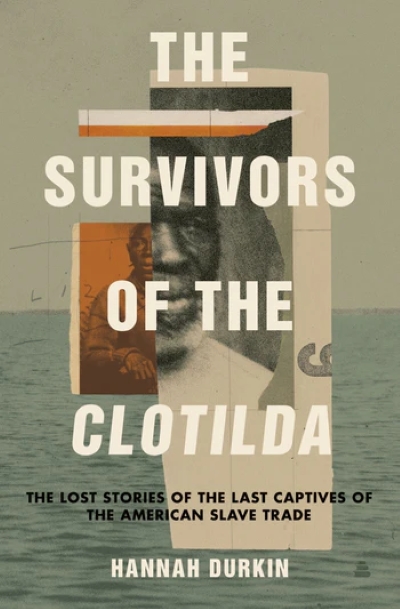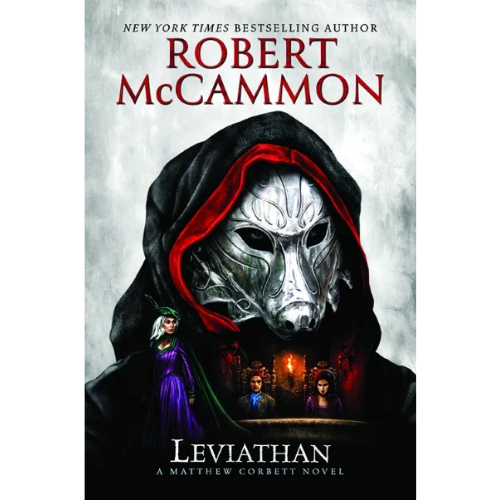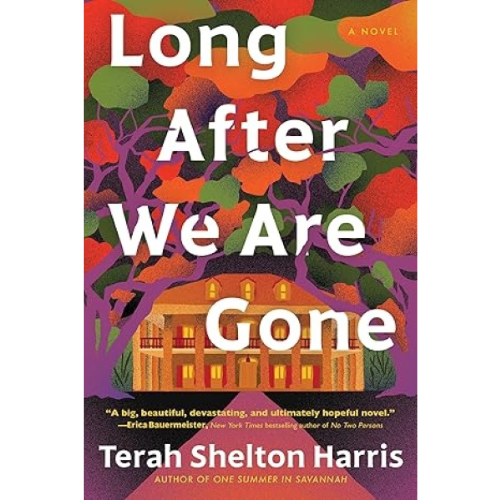The Survivors of the Clotilda: The Lost Stories of the Last Captives of the American Slave Trade
By Hannah Durkin
Amistad, 2024
Paperback: $29.99
Genre: U.S. History; Race & Ethnic Relations
Reviewed by Edward Journey
The Survivors of the Clotilda: The Lost Stories of the Last Captives of the American Slave Trade, by Hannah Durkin, provides sweeping and detailed new scholarship about the African diaspora, focusing on the people kidnapped and transported on the Clotilda. The notorious ship, now lying in the Mobile River, has prompted volumes of scholarship, especially since the well-documented discovery of its ruins in 2019. English historian Durkin provides a detailed and expansive examination that is, at times, daunting in scope. She includes information about the kidnapping itself as well as a far-reaching exploration of the lives of the 110 enslaved Clotilda Africans after emancipation. The ambitious study goes well into the twentieth century, providing links that directly connect the history of the American slave trade with the modern civil rights movement.
The basics of the Clotilda story are well-known by now. The United States banned international slave trade in 1808. Regardless, the illegal kidnapping and smuggling of Africans continued well into the nineteenth century. In 1860, on the brink of the Civil War, Timothy Meaher, a Maine-born steamboat captain based in Mobile, upped the ante on what began as a $100 bet that a shipment of African captives could be brought successfully to the U.S. coast. In Africa, Yorubans in the town of Tarkar were killed or kidnapped from their hometown by Dahomey warriors. Those kidnapped were chained together at the neck and marched 250 miles to the west coast of Africa to be treated as commodities in the slave trade. One hundred twenty-five of those captives were chosen by William Foster to be transported to the United States and enslaved. It took forty-four days for the Clotilda to reach American shores north of Mobile Bay, where the Africans were hidden, transported, and sold to various plantations. The crime was celebrated in news media, and the Clotilda was burned in an effort to get rid of the evidence. Later, Clotilda survivors were misidentified as survivors of the Wanderer, a ship that had transported victims of the slave trade a few years before the Clotilda – again, an effort to cover the crime. A team led by journalist/environmentalist Ben Raines finally positively identified the remains of the Clotilda in 2019.
The Survivors of the Clotilda stands apart from other studies for its abundance of first-person narratives from the survivors and their descendants, perhaps only exceeded by Zora Neale Hurston’s Barracoon, published in 2018. In that book, Hurston exclusively interviews Kossula, who went by the name Cudjo Lewis when he arrived in the United States. Kossula, who is the best documented of the Clotilda survivors, is often quoted in The Survivors of the Clotilda. Durkin provides other personal narratives of Kossula’s shipmates, including Polee, who repressed his trauma and would never tell his fifteen children anything “bad,” and Dinah, who forced her descendants to listen to her stories of her kidnapping and enslavement and would “beat them if they did not pay attention.” Individual, often first-person, stories of the captives make the anguish and suffering more real as Durkin follows many of the survivors to their deaths, often well into the twentieth century.
Durkin devotes a great deal of her study to the lives of the captives in Africa, with emphasis on the quality of life they enjoyed in their home environment in contrast to what they experienced in American enslavement and beyond. She provides startling information such as that “[A]n African person enslaved in the Americas had a life expectancy of around seven years.” The ruler of Kossula’s town chose death by beheading in Dahomey over enslavement.
Durkin explores how the Africans longed, dreamed, and hoped to return to Africa until their dying day. After emancipation, Kossula asks Timothy Meaher for a parcel of land to create a community for the Clotilda survivors. When Meaher refuses, the community saves their money and buys the land outright, creating Africatown with town leaders appointed to run the town in the African way they knew. Importantly, Durkin provides a history of other Alabama places where the survivors settled, including Gee’s Bend, Claiborne County, Daphne, Bogue Chitto, downtown Mobile, and Elmore County.
Bougier, who lived out her life in Elmore County, is another of the survivors followed in vivid detail. Durkin creates a conjectural narrative about Bougier taking her wares to market in Montgomery two days a week. Bougier’s hypothetical walk through Montgomery streets is used to fill in civil rights history well into the future, long after Bougier’s passing. As Durkin uses Bougier’s life as an illustration to make her points, she also explains how Bougier’s biography was appropriated and distorted by “lost cause” Confederacy mythologists to claim the “progress” she made as a result of her abduction.
In recent years, swarms of scholars have studied and followed the history of the Clotilda and its victims. In The Survivors of the Clotilda, Hannah Durkin seeks to cover and amplify that history. In doing so, she occasionally seems to overreach and lose focus. There are many names to keep track of and many sidetracks which, while of interest, might distract from the primary narrative: For example, banker/investor Josiah Morris, one of the enslavers of survivor Jackson Smith, later bankrolled the founding of Birmingham; the Lehman Brothers, whose Selma bank was a major funder of cotton farmers, feared that their business could not survive the Civil War. It is interesting that Durkin ponders the reasons why Hurston’s Barracoon was not published for almost a century, but, in an already dense text, it is not clear that it was necessary.
On a recent visit to Mobile’s Africatown, I was struck by a sense of the founders’ spirits in the streets and the community cemetery. In The Survivors of the Clotilda, Durkin’s presentation of the facts and anecdotal evidence of the survivors’ lives gives a more defined identity to those individuals and provides information on the other places where their spirits endure.
Edward Journey, a retired university professor and theatre professional living in Birmingham, regularly shares his essays in the online journal “Professional Southerner” (www.professionalsoutherner.com).







Leave A Comment
You must be logged in to post a comment.